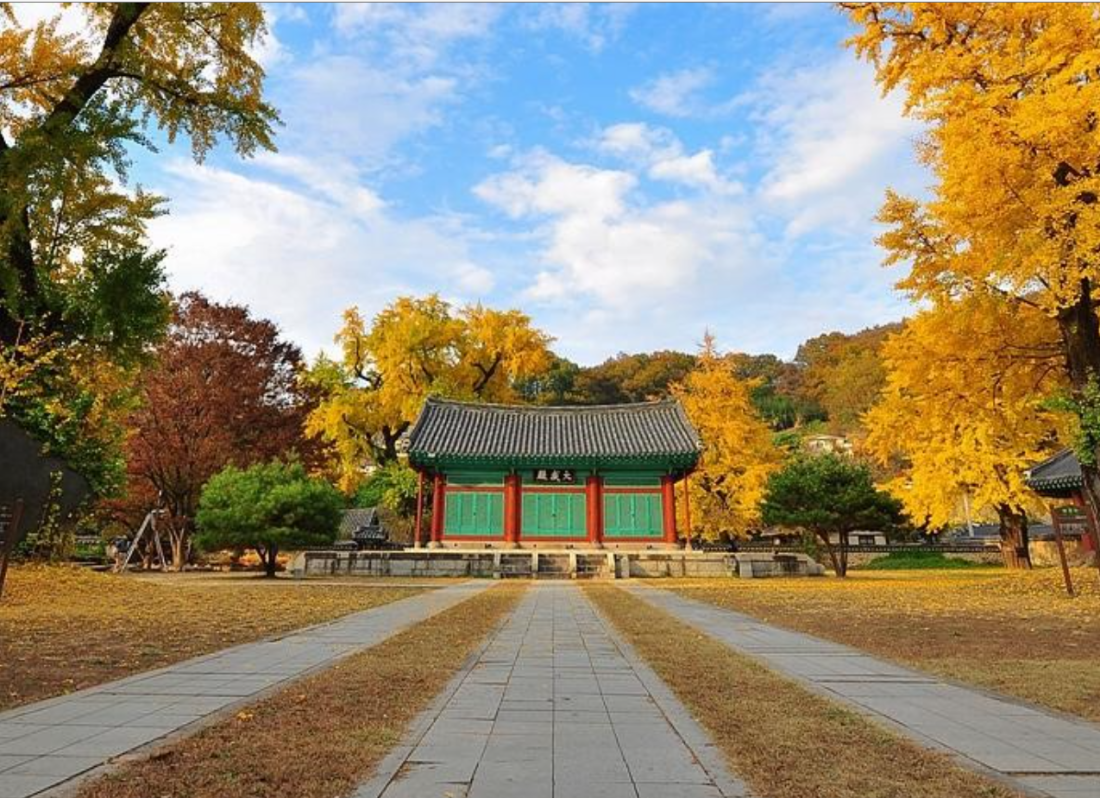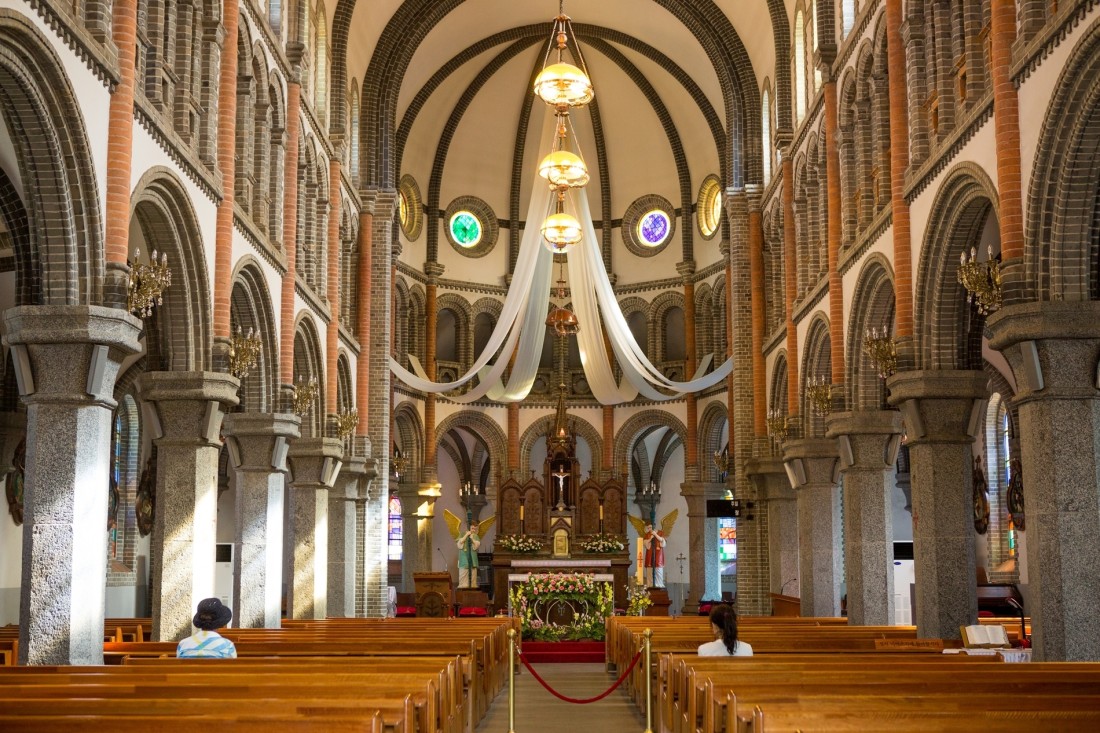History Jeonju
-

Hyanggyo in Jeonju
10min by walk
Hyanggyo is an educational institute of the Josen Dynasty. There are hundreds-of-year-old ginko trees in the yard. Ginko trees are rarely damaged by insect and remain intact, so the trees are usually planted in every Hyanggyo as role models to teach young Confucian scholars not to get corrupted.
-

Jeon Dong Church
15min by walk
Jeon Dong Catholic Church is built in the first place of martyrdom in the Korean Roman Catholic history -Yun Ji Chung and Gwon Sang Yeon's martyrdom on May of 1791. Preparing the ground was started commemoratively the 100 year martyrdom anniversaryin 1891. This building was started to establish in 1908 and the building was completed in 1914.
It is the first Western-style building as Romanesque Byzantine style building built in the Jeolla region.
-
Kyeonggijeon
15min by walk
Kyeonggijeon, they symbol of Jeonju Korean-style village. It's the building established in 10th year of Taejong to attend portrait of first king as Lee dynasty was founded.
There are currently Jeonju Han Lee, founder of the eponymous non-dues enshrines the tablets Jogyeongmyo, Yejong Great taesil, Jeonju accident, and the portrait museum in Kyeonggijeon
-King Taejo of Joseon -
Taejo of Joseon (October 27, 1335 – June 18, 1408; r. 1392–1398), born Yi Seong-gye, whose changed name is Yi Dan, was the founder and the first king of the Joseon Dynasty of Korea, and the main figure in overthrowing the Goryeo Dynasty. He was posthumously raised to the rank of Emperor in 1899 by Gojong, the Gwangmu Emperor, who had proclaimed the Korean Empire in 1897.
-
Omokdae
25min by walk
It is located on the right through Taejo-ro from the Information Post of the Hanok Village, and Imokdae can be reached when you come down the railway bridge connected to Omokdae. Lee Seonggae held a night banquet here on the way to Kesung, when he conquered a returning band of violent and cruel Japanese at Hwangsan, Wunbong, Namwon. He also sang the Deapungga (song of abundant harvest) it was first sung by founder Yubang of Han country, China: by this he suggested his ambitions to set up a new nation. Taking hint of this, his follower Jeong Mong-ju got angry and mounted a horse alone and ran out to Mankyungdae, Namgosan castle and composed a poem of sorrowful indignation; this poem sculptured is still here.
-
View of "Omokdae" north side
-
Hanbyeoknu Pavillion
[寒碧晴烟]
20min by walk
The pavillion stands on a small secluded hill. In the past, it welcomed the deep and noble sprint of scholars who were well-versed in both literature and arts. At present, it welcomes the poetic sprint of weary modern men.
-
Pungnam Cathle Gate
20min by walk
-
Youth Mall
in NAMBU MARKET
25min by walk
Youth Mall was reshaped by renovating warehouse that had been left unused on 2nd floor to breathe new air into the market by providing incentive for youngster to become sellers in the market.
As a result, it contains about 30 shops such as restaurants providing wold-wide recipes, cafe and design shop and gallery, which hold events on regular basis.







